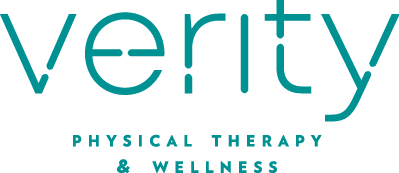All too often I hear things like, “oh ya, I pee my pants when I run but I’ve had kids so it’s totally normal and that’s life.” Or, “I can’t jump on the trampoline with my kids because I pee my pants and I just live with it.” I hear this one less often than the “pee my pants” one but, in my opinion, hearing it once is one too many times, “sex is uncomfortable and less enjoyable after having kids.”
My newest schtick is educating on the saying “common does not mean normal.” Yes, leaking urine after having children is common. Muscles, fascia, ligaments all get stretched out during pregnancy and childbirth. This can cause changes in strength and alter the ability of the muscles of the pelvic floor, core and glutes to function correctly and in unison. These changes will affect your ability to create pressure enough to close off the urethra (where our pee comes out) and possibly your rectum and can lead to unwanted leakage. However, just because these changes and stretching happens during pregnancy and with childbirth, does not mean long standing effects from these are normal and should be lived with.
Along with urinary incontinence, I also hear women stating that their experience sexually is uncomfortable and marginally (sometimes extremely) painful ever since having children but they live with it because “that’s just what happens after experiencing childbirth.” Again, things do get stretched, pulled, irritated, torn, changed, during pregnancy and childbirth and some women experience these more than others. However, living with less-than-satisfactory sexual interactions that are considered to be due to the physical act of childbirth should not be considered normal and do not have to be “lived with”. Pelvic floor physical therapy can conservatively and effectively help to decrease incontinence and dyspareunia linked to childbirth. Whether you are 6 weeks postpartum or 6+ years, pelvic floor PT can help make a difference and improve your quality of life.
Here are a few reasons why you may be having incontinence or dyspareunia:
You had tearing during childbirth that was stitched. Everything is back together and that is great. However, you may have scar tissue from the tearing. Scar tissue can grow like a spiderweb below the scar and adhere onto other structures. This adhesion pattern will affect the muscles ability to contract and relax appropriately thus decreasing strength. Adhesions can also cause pain. Similar to when you pull a bandaid off of your skin, scar tissue that has adhered down can pull on structures and cause pain.
You think you are performing kegels correctly but you’ve never been formally taught or checked. I have treated many women who say they are doing their kegels religiously but still leak. When I do an internal examination I find that they are squeezing their glutes and abdominal muscles but have very little activation in the muscles of the pelvic floor; the ones that ultimately keep us from peeing our pants!
Tightness! Muscles cannot be strong if they are too tight. Imagine that you can only straighten your elbow 50% of the way. Your bicep muscle (the one that bends your elbow) can only be 50% strong. For it to have 100% strength, it must be able to stretch out fully. This concept is the same for the pelvic floor muscles and is actually heightened due to the size of the muscles “down there”. The pelvic floor muscles are small and do not have much excursion (amount of distance a muscle can stretch and then contract) to begin with. Therefore, if they are at all tight, the strength is going to be severely affected.
How can we help these things?
Learn how to correctly contract and relax your pelvic floor muscles (also known as doing kegels). The best way to do this? Go see a pelvic floor PT who does internal work!
Assess for tightness around the hips, groin and pelvic floor muscles. Again, a pelvic floor PT who does internal work will best be able to assess this for you.
Work to decrease scar tissue adhesions through manual internal release.
Remember, common does not have to mean it is your new normal! You can do something about your pelvic floor symptoms and improve your quality of life!
Contact Verity Physical Therapy & Wellness today to schedule your assessment!















